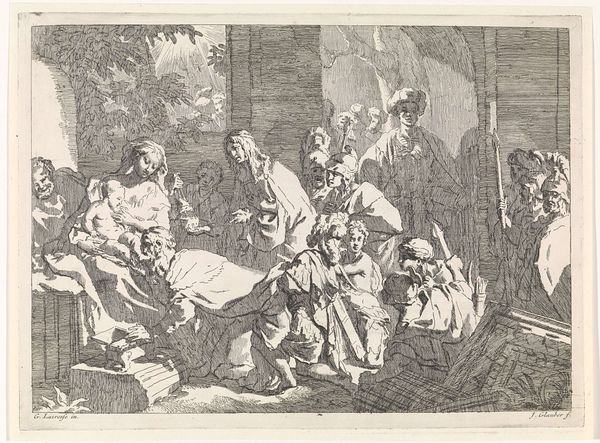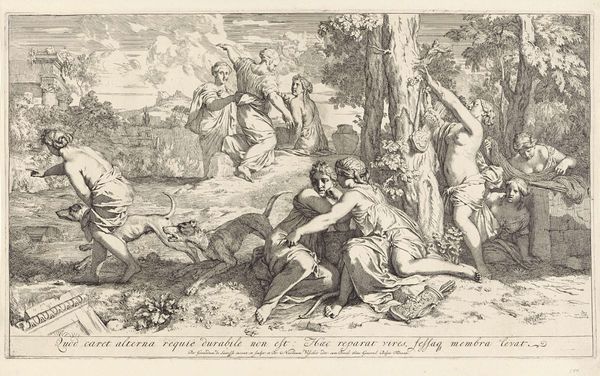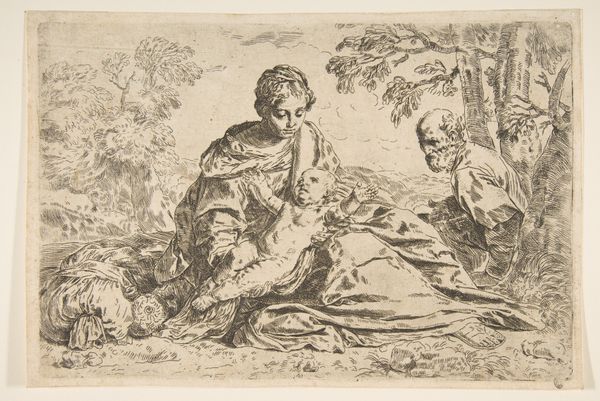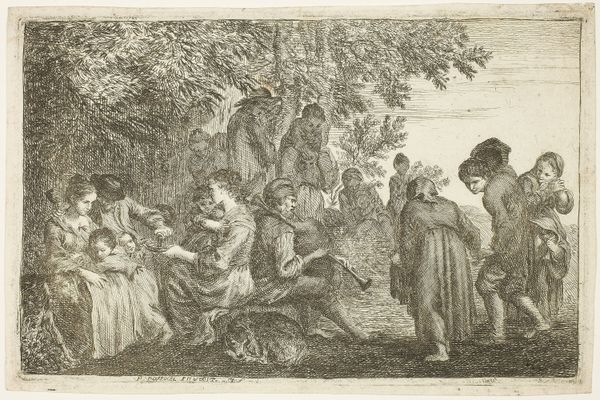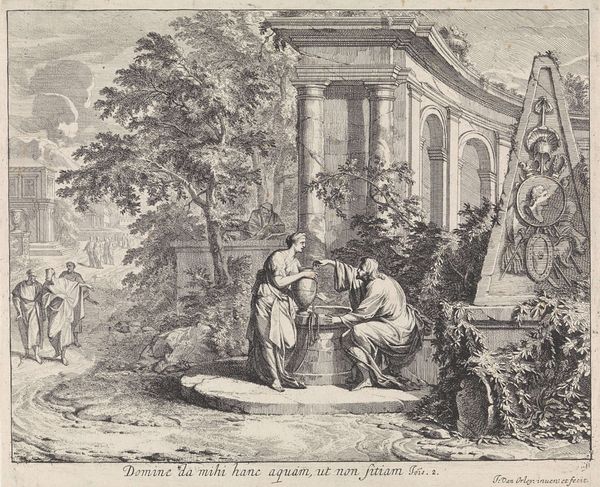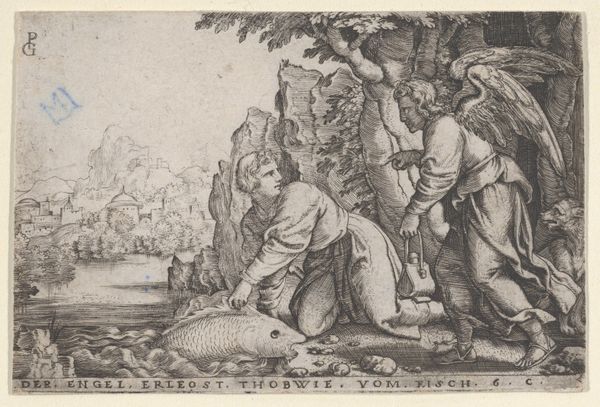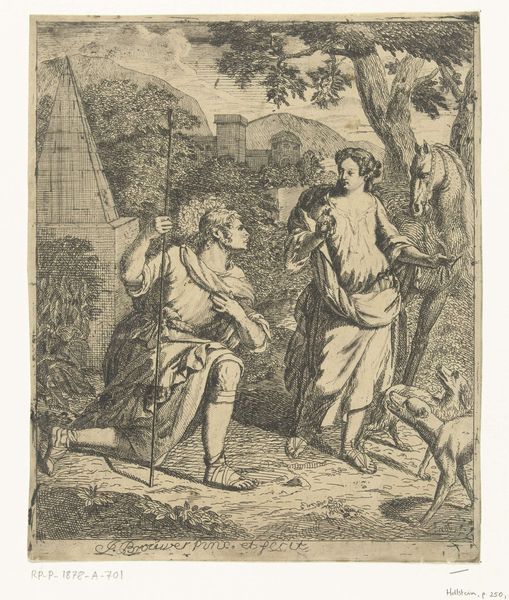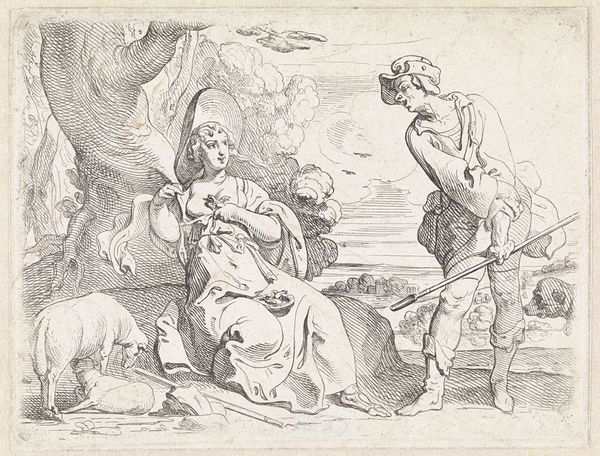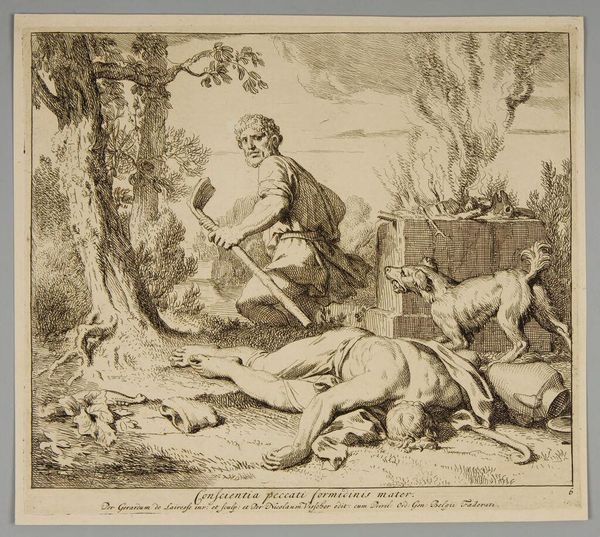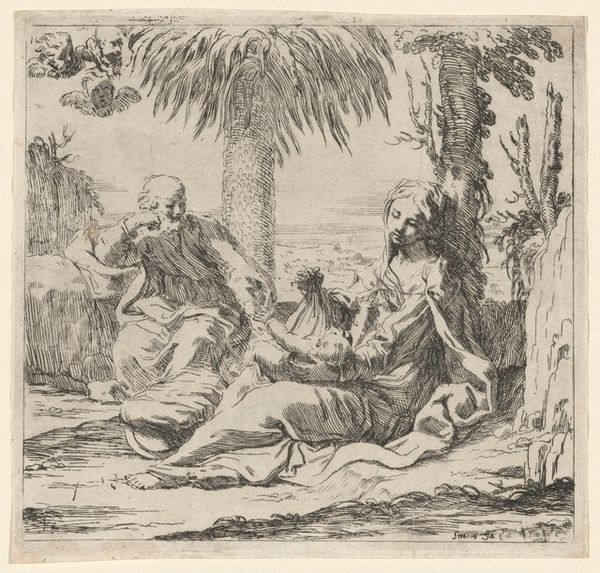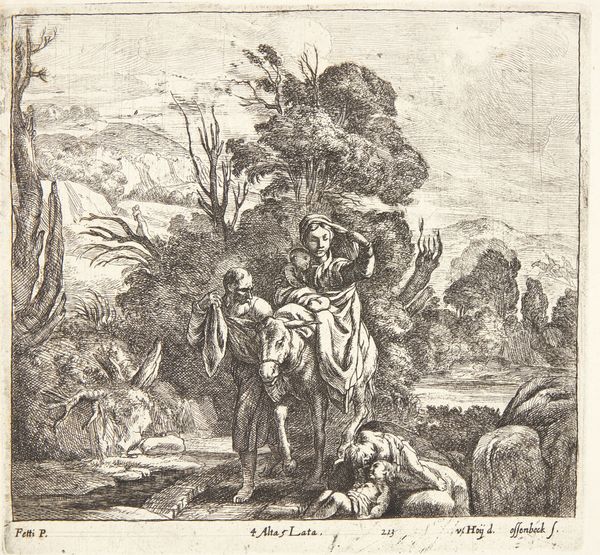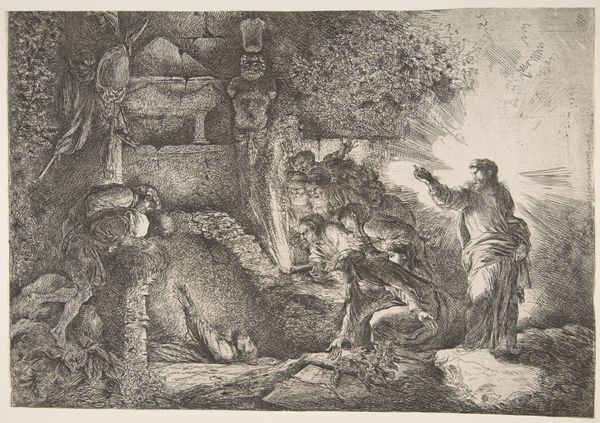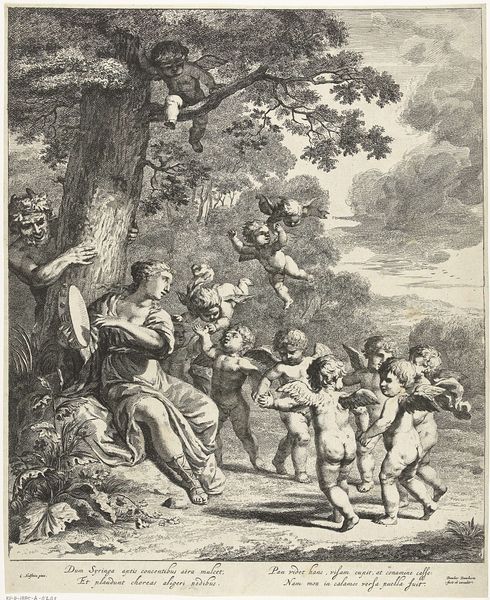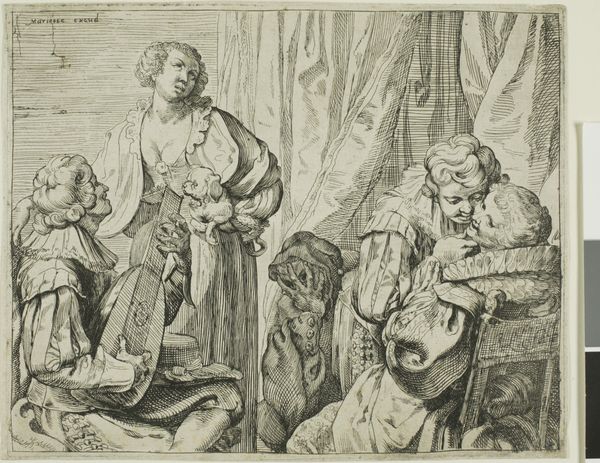
Diogenes searching for a honest man 1640 - 1650
0:00
0:00
drawing, print, etching
#
drawing
#
ink drawing
#
narrative-art
#
baroque
# print
#
etching
#
landscape
#
figuration
Dimensions: sheet: 11 3/4 x 8 1/4 in. (29.8 x 20.9 cm)
Copyright: Public Domain
Curator: This is "Diogenes searching for a honest man," an etching done sometime between 1640 and 1650 by Giovanni Benedetto Castiglione. It’s currently held at the Metropolitan Museum of Art. Editor: There’s such incredible detail rendered in the linework of this print, considering the artist would've been limited to monochrome! The mood feels philosophical, of course, yet surprisingly whimsical. Is that… a monkey? Curator: Several of them, actually! Castiglione, also known as Il Grechetto, was experimenting with printmaking during this period, pushing the boundaries of etching techniques. We see here a landscape filled with both classical ruins and, intriguingly, various animals. He often blended the sacred and the profane. Editor: So, beyond just illustrating the famous story of Diogenes' search, is Castiglione commenting on humanity’s place in the animal kingdom? I’m curious about the setting itself. It feels symbolic—these remnants of past civilizations becoming overgrown and populated with wildlife. There’s this subtle tension between nature and the human imprint. Is he perhaps suggesting the cyclical nature of societal corruption? Curator: Absolutely! Consider also the role of printmaking itself at this time—a democratizing force, capable of disseminating ideas and images far more widely than painting ever could. His etching allows for the philosophical concept of Diogenes' search to be consumed and digested by a larger segment of society. Furthermore, it provided opportunities for artists such as Castiglione to commodify their craft, catering to an increasingly complex system of production and labor, to a market in search of luxury goods. Editor: So, in a way, Castiglione is critiquing the very world in which he operates? This relentless search for honesty becoming an artistic statement *about* the honest labor of making art itself under capitalist forces. Curator: Precisely! The materials – the copper plate, the etching tools, the ink – all serve as the vehicles through which this search, and arguably its futility, are manifested. And let's not ignore how labor itself became racialized; consider that while Castiglione benefits from printmaking and increased consumption, the extraction of these materials in the Americas relied heavily on colonial subjugation of indigenous populations. Editor: I hadn't considered that colonial connection—that suddenly reframes the ‘whimsy’ I sensed earlier in a rather unsettling light. Curator: Well, exactly. I hope this dialogue prompts visitors to consider those interwoven complexities. Editor: It certainly will. Thinking about this image now, and what labor really means...It becomes an even richer, albeit troubling, tableau.
Comments
No comments
Be the first to comment and join the conversation on the ultimate creative platform.
